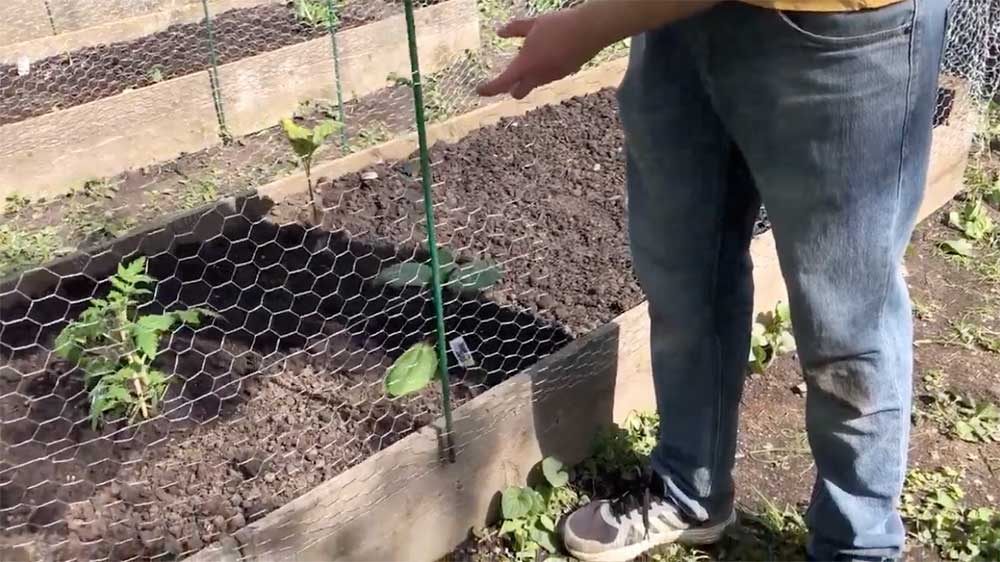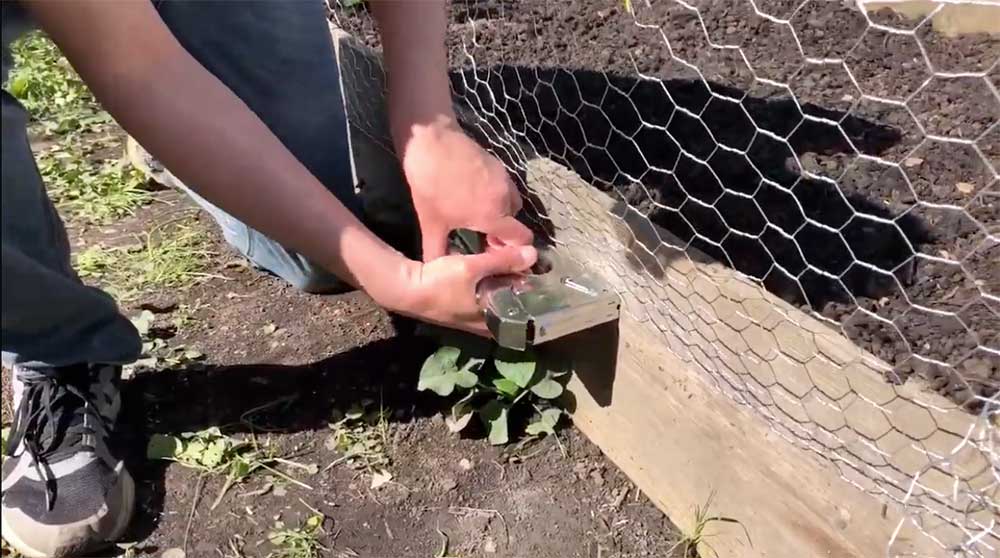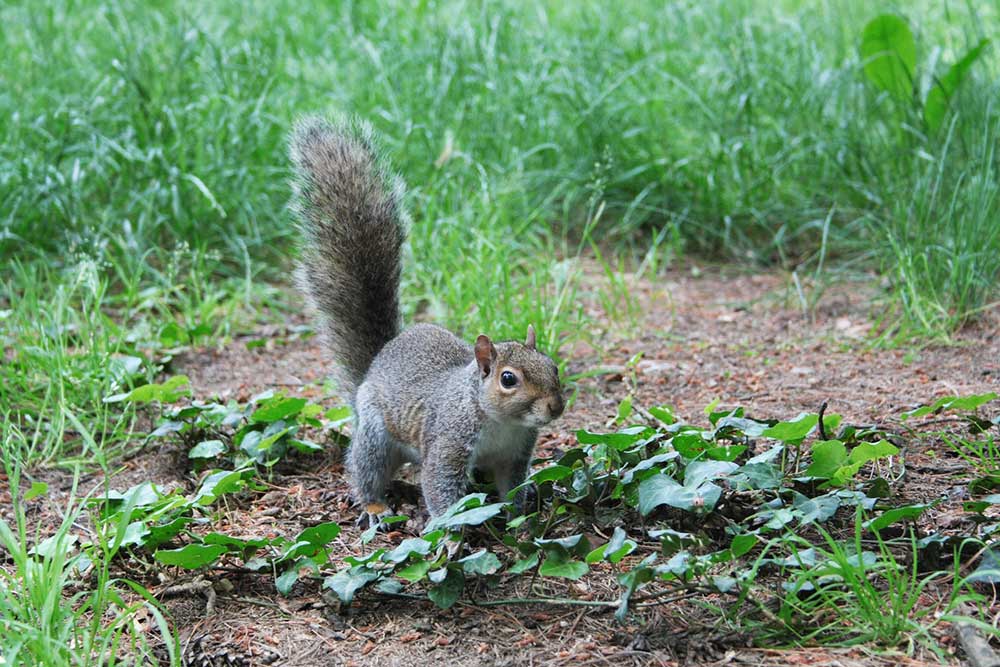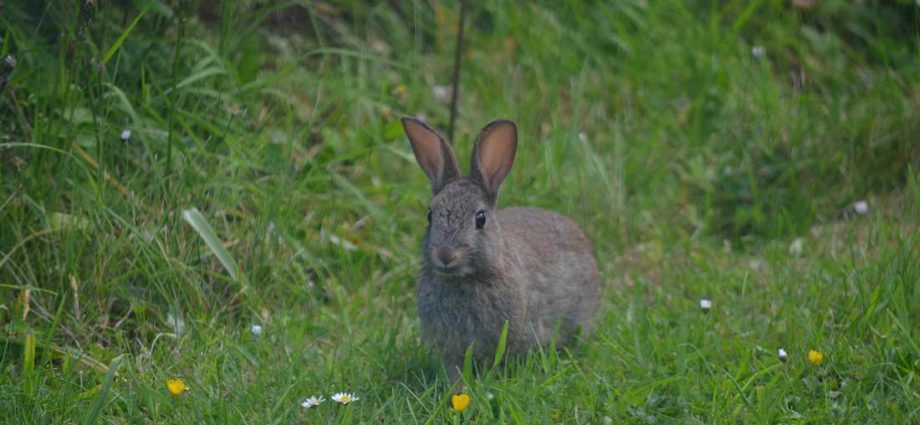Gardening is generally a peaceful pursuit. You spend hours in nature, cultivating the soil, and growing beautiful flowers and delicious vegetables with your own two hands. But when the gardener’s enemies attack, suddenly a garden bed can feel like a warzone, and often the gardener feels like they’re losing! For this article, I want to focus on some easy and animal-safe ways to prevent destruction to your garden from the most common urban and suburban critters, like squirrels, bunny rabbits, and birds. While some of these techniques are meant specifically for raised vegetable garden beds, you can use many of the same tips for traditional garden beds as well.
You may need to try a few techniques until you find something that works, especially if you have some especially crafty squirrels in your neighborhood.
Contents
How to Protect Raised Garden Beds from Squirrels, Rabbits, and Birds
Tip 1: Easy DIY Raised Garden Bed Fence
This is by far the best technique we’ve tried to keep critters from munching on our vegetable garden and we deploy it each spring to protect our young seedlings from being decimated by hungry rabbits and birds. This simple DIY garden fence can be built by anyone, even if you don’t have a lot of crafting or building skills. Watch the video or read the steps below:
Most of these supplies you can purchase at a local hardware store or online:
- Wooden Raised Garden Bed (Check Price on Amazon)
- 1″ Chicken Wire (Check Price on Amazon)
- Garden Stakes (Check Price on Amazon)
- Wire Cutters (Check Price on Amazon)
- Staple Gun and Staples optional (Check Price on Amazon)
- Bird Netting optional (Check Price on Amazon)
- Clothes Pins optional (Check Price on Amazon)
There are two techniques you can use when building your garden fence. You can either run the fence along the outside of the bed and secure it with staples or you can run it on the inside of the bed and bury it an inch or two in the soil to secure it in place. If your raised garden bed is vinyl or aluminum, you won’t be able to staple onto the outside.
Before You Start – Know the dimensions of your garden bed(s). This will help you estimate how much chicken wire and bird netting you’ll need. Always estimate a little extra, especially with the chicken wire because you will need to overlap by a few inches to create an impenetrable fence. If you’re going to staple the chicken wire on the outside you will need a longer piece of chicken wire, so make sure you measure the outside dimensions.
Step 1 – Wrap the chicken wire around the inside/outside of your garden bed the measure the size of the piece you need. Make sure to overlap a few inches.
Step 2 – Use the wire cutters to cut the chicken wire to size.

Step 3 – Use the garden stakes to create “fence posts.” You can either weave the stakes through the chicken wire or use zip ties to secure it. Use one at each corner. If your garden bed is long, you may want to use two in the middle to keep the sides from collapsing in. Push the stakes into the ground.

Step 4 – If you’re attaching the chicken wire on the outside, use the staple gun to attach it to the sides of the wooden garden bed. Use as many as needed to keep critters from pushing up under the fence. If the chicken wire is taught, you should be able to staple every 12-18″.
Step 5 optional – If birds are a problem, top your fence with bird netting to keep them away from berries and sweet seedlings. Cut the netting to fit the top of your fence–leave about 2-3″ along each edge. Use clothespins to attach the netting to the fence. This will make it easy to move the netting back to harvest, weed, or water your garden.
If this DIY garden fence is too simplistic for you, check out some more advanced ideas using PVC pipe frames from Grit.com.
Tip 2 – Motion Activated Sprinkler
If the critters in your yard have outsmarted your fence or you’re having a problem with neighborhood cats visiting your flower beds, a motion-activated sprinkler can be a great deterrent. All you have to do is attach your garden hose and anytime a squirrel, rabbit, bird, or cat comes in range it will spray them with water. Over time, the threat of water is deterrent enough.

Tip 3 – Grow Deterrent Plants
If you want to go a natural route, you can grow certain plants in your garden to deter common garden pests like squirrels, rabbits, and sometimes deer. This technique works best with bunnies who have sensitive noses. Frequently flowering plants with strong scents are disliked by the small animals that visit your garden, which makes them perfect to add some extra beauty to a vegetable garden bed and attract pollinators. Many gardeners will use some of the smaller flowering plants to create a border inside their garden or around the outside of a raised garden bed.
Check out a few of these options to deter whatever critter is causing your problems.
Plants to Deter Rabbits
- Ageratum
- Begonias
- Big Periwinkle
- Bougainvillea
- Columbine (Honeysuckle)
- Echinacea (Coneflower)
- Geraniums
- Goatweed
- Lantana
- Lavender
- Marigolds
- Peppers
- Rhododendrons
- Salvia
- Strawflower
- Sweet Alyssum
- Tomtaoes
- Zinnias
Plants to Deter Squirrels
- Allium
- Daffodils
- Geranium
- Hyacinths
- Lily of the Valley
- Peppermint
If humans are raiding your garden, learn how to stop garden theft.
Make sure you have all the tools you need. Check out 15 common garden tools and their uses.

